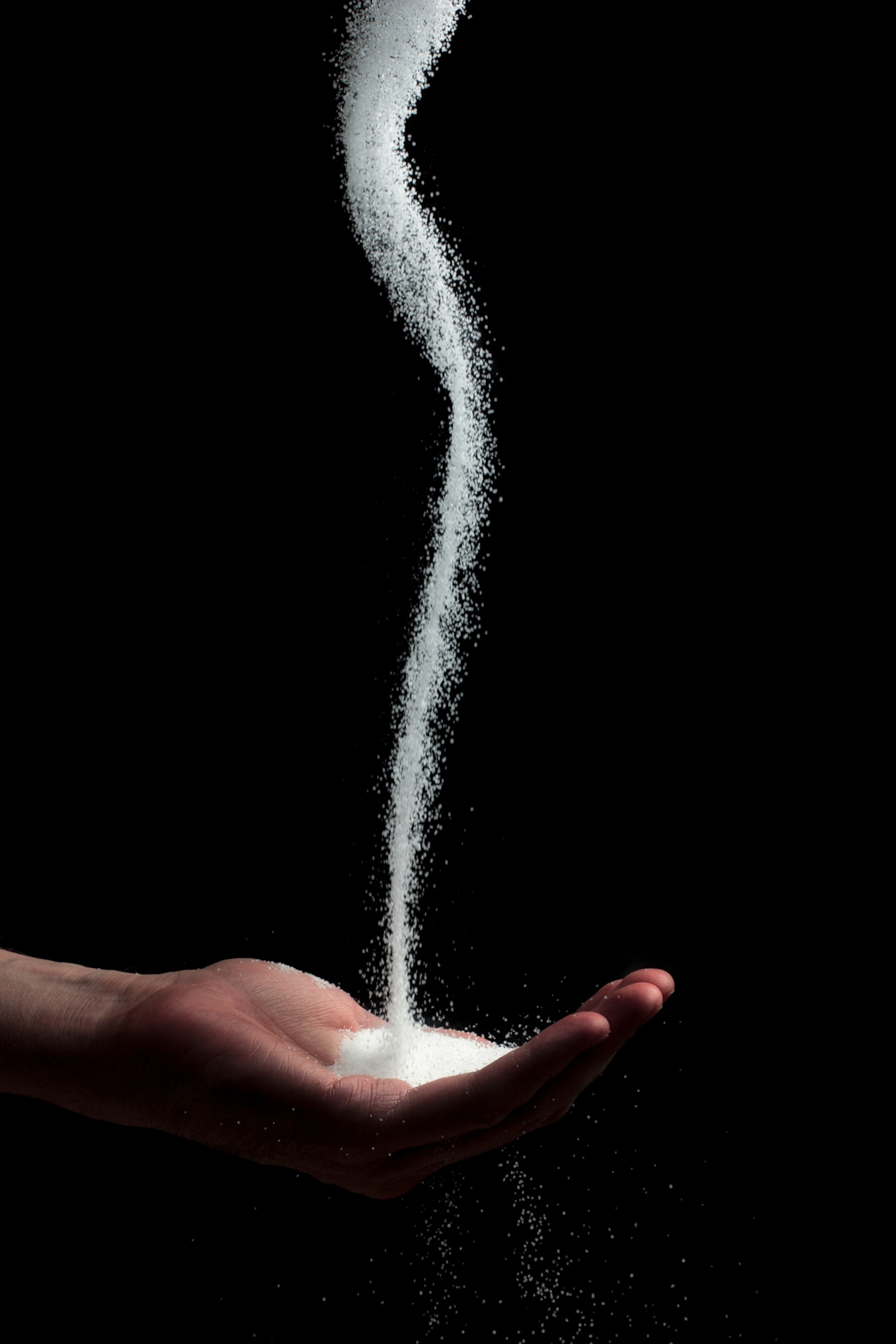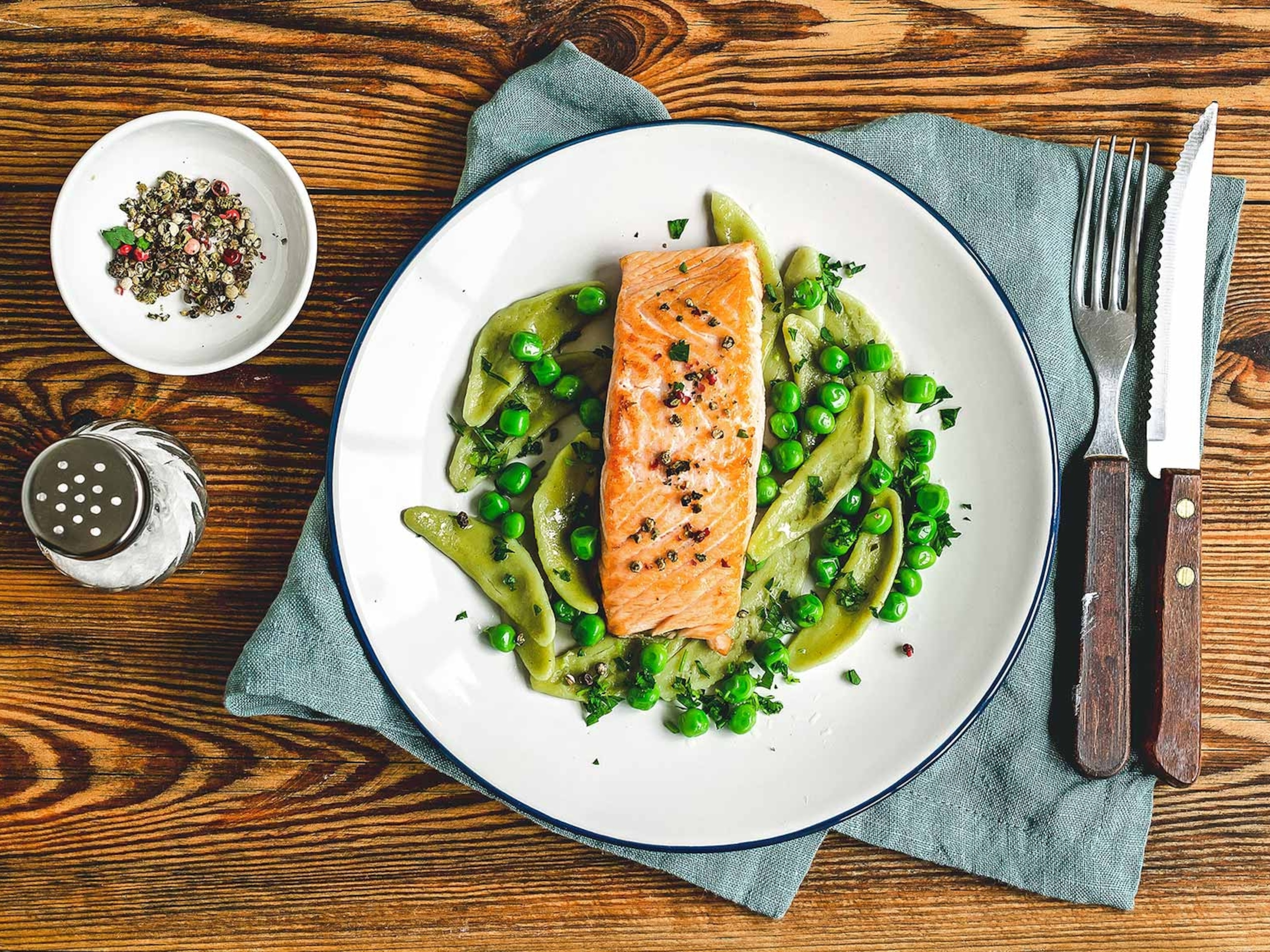How much salt is too much? The answer isn't as clear as you may think
While most experts recommend cutting down on salt, some detractors question whether most people really need to be making their meals blander.

Salt—that beloved, ubiquitous, indispensable condiment.
An essential nutrient, and yet the source of serious disease when consumed in excess. What counts as excess, however, is a bitter debate among some scientists.
Regularly consuming too much salt can lead to hypertension, or high blood pressure.
For most healthy adults, the World Health Organization recommends eating no more than two grams of sodium a day, and the American Heart Association (AHA) recommends a hard sodium cap of 2.3 grams a day, equivalent to a teaspoon of salt. This limit is based on claims that consuming that amount or less would not raise blood pressure levels. Ideally, the AHA says sodium consumption should be two thirds of that, especially for those who already have high blood pressure.
But it’s all too easy to overshoot this limit—a cheeseburger with the usual condiments, a can of soup, or two slices of pizza will each suck up your salt budget for the day.
The daily average sodium intake of Americans currently sits at 3.4 grams. Worldwide, that number is 4.3 grams, propped up by countries in East and Central Asia, which are well-known for their rich cuisines.
When it comes to blood pressure, no scientist disputes the downsides of an exorbitant salt intake. But the controversy lies is the threshold—how much salt is too much?
What does salt do to your body?
Table salt consists of two oppositely charged ions, sodium and chloride. The more maligned actor of the duo is sodium. Sodium ions cue the body to release or retain water so that sodium levels remain steady. But a chronic excess of sodium can push the body too far.
During a sodium spike, the body counters by retaining water, resulting in a blood volume expansion. The heart kicks into high gear to push elevated quantities of blood around. Under high traffic, the blood vessels stiffen, ratcheting up the pressure on their walls. The kidneys also have to slog away to filter out extra salt from the bloodstream that’s then excreted in urine.
All this strains the heart and the kidneys. Like a worn tire that has lost its tread, over time these blood-pressure first responders weaken. Long-term overconsumption of salt can spell kidney failure, heart disease, and stroke.
In other parts of the body, a salt-hooked lifestyle can increase the chances of stomach ulcers and cancer. Moreover, some studies claim that salt pulls calcium from the bone and can lead to osteoporosis, though the effect has not been observed unilaterally across different groups of people.
The debate over salt
Salty food can be particularly hard to limit because our bodies are wired to crave it.
Salt is essential for health. Insufficient dietary salt can lead to muscle cramps, and more serious conditions like insulin resistance and atherosclerosis, a condition of arterial constriction that’s a precursor to stroke. Too little salt can also be fatal, but today it’s rare—only 2 percent of people in the U.S. are at risk of under consuming salt.
Despite this limited risk, some researchers have soured on the low-salt movement for better health, claiming that salt warnings are too strict. In 2013, an assessment published by the Institute of Medicine—a nonprofit science advisory group that now goes by the National Academy of Medicine—reopened the inquiry into the 2.3 gram limit, citing the lack of evidence for such a spartan requirement. Their pushback heightened what’s known in the medical community as the “salt wars”.
After the report, the AHA claimed that the evidence was incomplete and disagreed with the findings.
Sticking with existing healthcare guidelines is challenging in practice, says Franz Messerli, a professor of medicine at the University of Bern in Switzerland. For one, no country in the world has stayed below the sodium ceiling that major health organizations are preaching. Messerli is part of the camp that considers the strict crusade against salt to be overblown.
Part of his argument is that salt’s relationship to blood pressure can be obscured by other factors, such as a person’s medical history, stress levels, occupation (outdoor workers regularly exposed to heat, for example, can get away with a salt-rich diet), and daily habits. Those who have a physically active lifestyle can also tolerate a higher salt intake, as exercise lowers blood pressure.
Researchers critical of current salt recommendations, including Messerli, say that the correlation between salt intake and cardiovascular morbidity is a J-shaped curve, in which too little and too much salt present health hazards, though some scientists have disputed this.
The focus on salt and blood pressure, which is more or less linearly related, misses this nuance and ignores other key importances of salt on the body that only become apparent when salt intake is too low, Messerli says.
According to medical guidelines, the minimum daily sodium intake is 0.5 grams per day.
Salt sensitivity, which is how much an individual’s blood pressure jumps in response to a dose of salt, also differs from person to person. African Americans, for example, have nearly double the prevalence of hypertension compared with white people, possibly due to genetic and socioeconomic factors.
“Salt is suspected to be a powerful electrolyte that causes damage, but to what extent and the exact circumstances of when and where, we still don't know,” Messerli says.
Performing a randomized controlled trial, the procedure for testing a new drug, would be the best way to quell the salt controversy once and for all.
But such a study—one that involves a large participant group and runs for several years—quickly runs into practical challenges. A low sodium diet is a hard sell; many people in the U.S. already struggle to stick to a reduced salt intake past six months. In 2019, a group of researchers suggested that the best setting for such an experiment would be prisons where meals are as tightly regulated as the rest of a prisoner’s day-to-day. Yet such a study raises ethical dilemmas.
Even without strict human studies, new research is revealing how salt intake affects more than blood pressure.
Scientists observed that salt influences cellular metabolism and can rouse immune cells to ward off pathogens in the body, according to research by Max Delbrück Center cardiovascular scientist Dominik Müller. His team also found that the body may naturally accumulate salt around skin wounds as a defensive mechanism. However, high salt intake can also trigger inflammation, which leads back to cardiovascular breakdown and autoimmune disease.
“The definition of salt sensitivity is rather blood-pressure centric,” Müller says. “Perhaps one should consider a broader definition of salt sensitivity—not only its link to blood pressure, but also to cellular function.”
How to cut back on your salt intake
Only a tiny fraction of our daily sodium originates from added salt during everyday cooking; the rest—over 70 percent—we derive from ultra-processed foods. Salt functions as a preservative, alters food structure, retains moisture in meats, and acts as a stabilizer in processed foods. Even dietary staples that don’t taste outright salty, such as bread, can be a major source of dietary sodium.
Given the glut of salt in grocery items, and that 48 percent of American adults experience hypertension, there’s a good chance that people stand to benefit from curbing salt intake, even marginally. Reducing salt intake as a national guideline is also a safe bet for the population to achieve a healthier lifestyle.
Plus, with our car-dependent, relatively sedentary lifestyles, the average American is at greater risk at overconsumption of sodium than underconsumption, says Raeeda Gheewala, a nephrologist and founder of the clinic Sports Nephrology. When it comes to the recommended 2.3-gram sodium limit, “I don't think it's too stringent in this country,” she adds. Eating at home is the easiest way to control how much salt goes in our food. To that end, “grocery shopping is the most important part of the process,” Gheewala says.
She advises her patients to plan all their meals for the week in advance to ensure their homes are devoid of salty snacks.
“It's usually the snacks in between meals that push people over the edge,” Gheewala says. Instead of bites like chips and crackers, she recommends au naturel alternatives such as fruits, veggies, and unsalted nuts.
Salt substitutes are another way for people to reduce sodium intake without sacrificing too much of the taste. Basically, they’re table salt with the sodium ion replaced by potassium. Potassium chloride is also salty, though it reportedly has a bitter tang. Like sodium, too much potassium can be detrimental to our health, but the fact that most Americans already don’t consume enough of it means salt substitutes won’t put practitioners near the risk of potassium overconsumption.
One study in China, the largest randomized clinical trial conducted to date, found that replacing a quarter of daily sodium intake with potassium led to a 12 percent drop in stroke, 13 percent for heart attacks. Such alternatives get around the blandness challenge. What’s more, potassium also counters sodium’s effects by relaxing the blood vessels and helping shuttle sodium out of the body.
Gheewala, Muller, and Messerli all say that while they try to watch their daily salt intake, they’re not overzealous about it. While there are copious health benefits to limiting salt, occasionally succumbing to a chip, a salami slice, or a cracker, isn’t something to sweat over—and can always be balanced by throwing on a pair of sneakers and working out at the gym.








